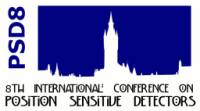Speaker
Phil Allport
(U. of Liverpool)
Description
Planar, segmented silicon sensors are used for the tracker and vertex detectors for high energy physics experiments at the Large Hadron Collider (LHC) because of their unsurpassed performance in terms of granularity, resolution and speed while offering relatively low mass. The planned luminosity upgrade of the Large Hadron Collider at CERN (Super-LHC, sLHC) will provide a challenging environment for these silicon tracking and vertexing detector systems. For the regions where silicon micro-strip detectors are envisaged in the sLHC ATLAS experimental upgrade, the expected particle fluence at the innermost microstrip layer is up to 1x10^15 1 MeV neutron equivalent particles (neq) per square centimetre over the anticipated 5 year lifespan of the experiment, making the radiation hardening of the silicon detectors more important than ever.
We present studies of the charge collection efficiencies of various readout geometries ( p+ strip in n-bulk, n+ strip in n-bulk, and n+ strip in p-bulk) as well as substrate types (float zone or magnetic Czochralski) after neutron irradiation up to 1x10^15 neq per square centimetre . The charge collection efficiency measurements have been carried out using 128 channel analogue, high-speed (40MHz) electronics and a Strontium electron source. These measurements provide a reference of the expected collected charge by segmented devices at these extreme doses and give input to the design of the readout electronics necessary for the various micro-strip tracking subsystems planned to be used at the Super-LHC.
Author
Dr
Anthony Affolder
(University of Liverpool)
Co-author
Phil Allport
(U. of Liverpool)

